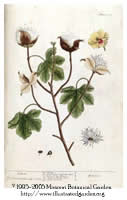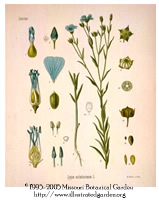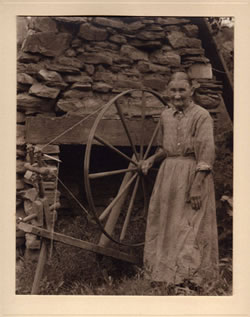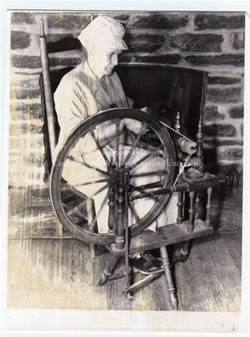Textiles:
Spinning
In his book Handicrafts of the Southern Highlands, Allen Eaton states that “Hand spinning and weaving were at the foundation of the revival of handicrafts in the Southern Highlands.” Of all the crafts, these were the most popular and provided the most economic benefit.

Eaton noted the difficulty of spinners keeping up with the demand for enough thread to supply a weaver and estimated that it took eight spinners to supply one weaver with yarn. Sometimes spinning and weaving were done by different members of the same household; at other times, all operations were carried out by the same person. He related a story told to him by a weaver he called Grandma Wilson who lived in Macon County, eight miles from Highlands, North Carolina. Wilson’s son and daughter spun for her. “Her little son had stood on one side of the fireplace spinning in the evening, and her daughter on the other side with another wheel trying to get yarn ahead so that she could continue her weaving the next day. The two children could not, of course, in an evening supply her loom for a full day.”
Two types of spinning wheels were used during the Craft Revival. A high wheel was operated while standing and propelled by hand. The high wheel was used for spinning cotton and wool. A smaller low wheel was operated while seated using a foot-powered treadle and was mainly used for flax.

See More: Spinning Wheels





